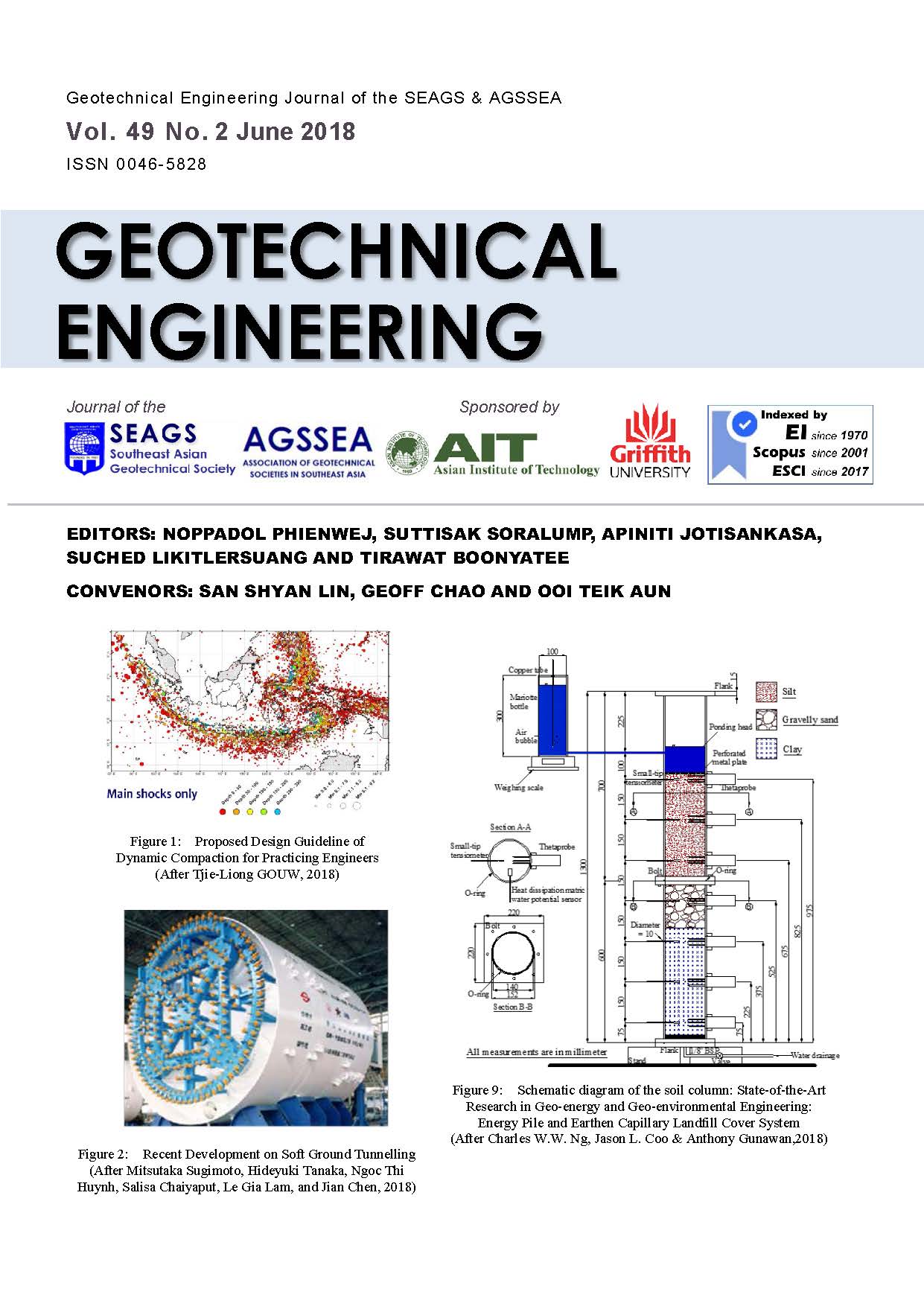Application of Photogrammetry and Image Analysis for Rock Slope Investigation
Main Article Content
Abstract
This study reviews the applications of close range photogrammetry (CRP) on modelling for rock slope stability analysis and weathering investigations focussing on the applicability of CRP to obtaining roughness characteristics. Current photogrammetric techniques have a potential to provide roughness profiles with dense measurement intervals. However, the quality of the roughness data is still questionable and the level of accuracy has not been sufficiently investigated. To advance the boundaries of the availability of CRP, this paper presents methodologies which can quantify the degree of accuracy for the obtained roughness data and to detect the data noise as an evaluation tool. Firstly, this study suggests an error model which measures the level of accuracy based on an ideal lab condition. The level of accuracy of rock joint roughness coefficient (JRC) obtained from CRP can be interpreted by using the developed error model. Secondly, this paper presents an image analysis workflow via a MATLAB image filtering code for the estimation of recession areas focussing on the variation of rock surface roughness. This post-process of CRP supports more reliable interpretation of photogrammetric roughness data. The developed error model and the combined image analysis with 3D photogrammetric models could compensate the limitations of the uses of both digital photographs and 3D surface models to obtain roughness characteristics and for quantifying weathering patterns.
Article Details

This work is licensed under a Creative Commons Attribution-NonCommercial-NoDerivatives 4.0 International License.
Copyright © 2019 Association of Geotechnical Societies in Southeast Asia (AGSSEA) - Southeast Asian Geotechnical Society (SEAGS).


